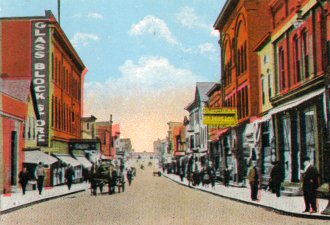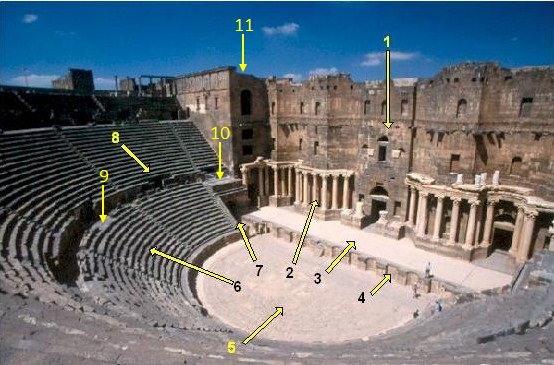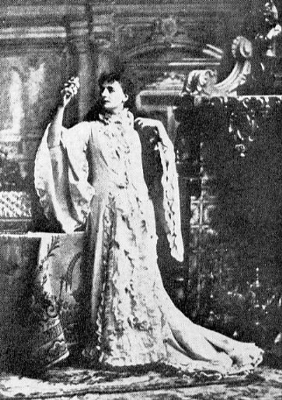|
Calumet Theatre
The Calumet Theatre is a historic theatre located at 340 Sixth Street in the town of Calumet, Michigan. It is also known as the Calumet Opera House or the Calumet Civic Auditorium. It is integral to, but a separate unit of, the Calumet municipal building. The structure was designated a Michigan State Historic Site in 1971 and added to the National Register of Historic Places in 1971. It is one of the 21 Heritage Sites which partners with the Keweenaw National Historical Park. The theatre was the original home oThe Red Jacket Jamboree an old-time radio variety show. History The village of Calumet was a prosperous community at the close of the nineteenth century, primarily due to the rich vein of copper mined by the Calumet and Hecla Mining Company, located just south and east of the village. In 1898, the community decided that an opera house was required to serve the people of Calumet. [...More Info...] [...Related Items...] OR: [Wikipedia] [Google] [Baidu] |
Calumet, Michigan
Calumet ( or ) is a Village (United States), village in the Upper Peninsula of Michigan, Upper Peninsula of the U.S. state of Michigan. The village is located within Calumet Charter Township, Michigan, Calumet Township, Houghton County, Michigan, Houghton County, and had a population of 621 at the 2020 United States census, 2020 census. Calumet was once the center of Michigan's Copper mining in Michigan, copper mining industry. The village is home to a unit of Keweenaw National Historical Park, and also includes the Calumet Downtown Historic District, listed on the National Register of Historic Places (NRHP). Most of the village itself is also included within the Calumet Historic District, a larger area which is NRHP-listed and which is a National Historic Landmark District. History What is now Calumet was settled in 1864, originally under the name of Red Jacket, for a Native Americans in the United States, Native American Chief of the Seneca tribe. Until 1895 the name "Ca ... [...More Info...] [...Related Items...] OR: [Wikipedia] [Google] [Baidu] |
Frank Morgan
Francis Phillip Wuppermann (June 1, 1890 – September 18, 1949), known professionally as Frank Morgan, was an American character actor. He was best known for his appearances in films starting in the silent era in 1916, and then numerous sound films throughout the 1930s and 1940s, with a career spanning 35 yearsObituary ''Variety Obituaries, Variety'', September 21, 1949, page 63. mostly as a contract player at Metro-Goldwyn-Mayer. He is best-known for his multiple roles, including the title role of Wizard of Oz (character), Oscar Diggs/The Wizard in the 1939 MGM film ''The Wizard of Oz''. He was also briefly billed early in his career as Frank Wupperman and Francis Morgan. Early life Morgan was born on June 1, 1890, in New York City, to Josephine Wright (née Hancox) and George Diogracia Wuppermann. He was the youngest of 11 children and had five brothers and five sisters. The elder Mr. Wuppermann was born in Venezuela but was brought up in Hamburg, Germany, and was of German a ... [...More Info...] [...Related Items...] OR: [Wikipedia] [Google] [Baidu] |
Ghost
In folklore, a ghost is the soul or Spirit (supernatural entity), spirit of a dead Human, person or non-human animal that is believed by some people to be able to appear to the living. In ghostlore, descriptions of ghosts vary widely, from an invisible presence to translucent or barely visible wispy shapes to realistic, lifelike forms. The deliberate attempt to contact the spirit of a deceased person is known as necromancy, or in Kardecist spiritism, spiritism as a ''séance''. Other terms associated with it are apparition, haunt, haint, phantom, poltergeist, Shade (mythology), shade, specter, spirit, spook, wraith, demon, and ghoul. The belief in the existence of an afterlife, as well as manifestations of the spirits of the dead, is widespread, dating back to animism or ancestor worship in pre-literate cultures. Certain religious practices—funeral rites, exorcisms, and some practices of Spiritualism (beliefs), spiritualism and ritual magic—are specifically designed to re ... [...More Info...] [...Related Items...] OR: [Wikipedia] [Google] [Baidu] |
Proscenium
A proscenium (, ) is the virtual vertical plane of space in a theatre, usually surrounded on the top and sides by a physical proscenium arch (whether or not truly "arched") and on the bottom by the stage floor itself, which serves as the frame into which the audience observes from a more or less unified angle the events taking place upon the stage (theatre), stage during a theatrical performance. The concept of the fourth wall of the theatre stage space that faces the audience is essentially the same. It can be considered as a Social constructionism, social construct which divides the actors and their stage-world from the audience which has come to witness it. But since the curtain usually comes down just behind the proscenium arch, it has a physical reality when the curtain is down, hiding the stage from view. The same plane also includes the drop, in traditional theatres of modern times, from the stage level to the "stalls" level of the audience, which was the original meani ... [...More Info...] [...Related Items...] OR: [Wikipedia] [Google] [Baidu] |
Marquee (sign)
A marquee is most commonly a structure placed over the entrance to a hotel, theatre, casino, train station, or similar building. It often has signage stating either the name of the establishment or, in the case of theatres, the play (theatre), play or film, movie and the artist(s) appearing at that venue. The marquee is sometimes identifiable by a surrounding compound of light bulbs, usually yellow or white, that flash intermittently or as Chase (lighting), chasing lights. Etymology The current usage of the modern English word ''marquee,'' that in US English refers specifically to a canopy projecting over the main entrance of a theater, which displays details of the entertainment or performers, was documented in the academic journal ''American Speech'' in 1926: "''Marquee'', the front door or main entrance of the big top." In British English "marquee" refers more generally to a large tent, usually for social uses. The English word ''marquee'' is derived from the Middle French ... [...More Info...] [...Related Items...] OR: [Wikipedia] [Google] [Baidu] |
Cornice
In architecture, a cornice (from the Italian ''cornice'' meaning "ledge") is generally any horizontal decorative Moulding (decorative), moulding that crowns a building or furniture element—for example, the cornice over a door or window, around the top edge of a pedestal, or along the top of an interior wall. A simple cornice may be formed with a crown, as in crown moulding atop an interior wall or above kitchen cabinets or a bookcase. A projecting cornice on a building has the function of throwing rainwater free of its walls. In residential building practice, this function is handled by projecting gable ends, roof eaves, and rain gutter, gutters. However, house eaves may also be called "cornices" if they are finished with decorative moulding. In this sense, while most cornices are also eaves (overhanging the sides of the building), not all eaves are usually considered cornices. Eaves are primarily functional and not necessarily decorative, while cornices have a decorative a ... [...More Info...] [...Related Items...] OR: [Wikipedia] [Google] [Baidu] |
Jacobsville Sandstone
Jacobsville Sandstone is a red sandstone formation, marked with light-colored streaks and spots, primarily found in northern Upper Michigan, portions of Ontario, and under much of Lake Superior. Desired for its durability and aesthetics, the sandstone was used as an architectural building stone in both Canada and the United States. The stone was extracted by thirty-two quarries throughout the Upper Peninsula of Michigan approximately between 1870 and 1915. The sandstone has been variously called redstone, brownstone, Lake Superior Sandstone, and Eastern Sandstone. In 1907, the Jacobsville Formation was given its current classification and the name ''Jacobsville'', in honor of Jacobsville, Michigan, a town known for its production of the sandstone. The sandstone was deposited within terrestrial fluvial environments early in the Neoproterozoic Era. Geology Classification The earliest geologic studies of southern Lake Superior were made in the early 1800s. Many studies used ... [...More Info...] [...Related Items...] OR: [Wikipedia] [Google] [Baidu] |
Renaissance Revival Architecture
Renaissance Revival architecture (sometimes referred to as "Neo-Renaissance") is a group of 19th-century Revivalism (architecture), architectural revival styles which were neither Greek Revival architecture, Greek Revival nor Gothic Revival architecture, Gothic Revival but which instead drew inspiration from a wide range of classicizing Italian modes. Under the broad designation Renaissance architecture 19th-century architects and critics went beyond the architectural style which began in Florence and Central Italy in the early 15th century as an expression of Renaissance humanism; they also included styles that can be identified as Mannerism, Mannerist or Baroque. Self-applied style designations were rife in the mid- and later 19th century: "Neo-Renaissance" might be applied by contemporaries to structures that others called "Italianate", or when many French Baroque features are present (Second Empire (architecture), Second Empire). The divergent forms of Renaissance architect ... [...More Info...] [...Related Items...] OR: [Wikipedia] [Google] [Baidu] |
Non-profit Organization
A nonprofit organization (NPO), also known as a nonbusiness entity, nonprofit institution, not-for-profit organization, or simply a nonprofit, is a non-governmental (private) legal entity organized and operated for a collective, public, or social benefit, as opposed to an entity that operates as a business aiming to generate a Profit (accounting), profit for its owners. A nonprofit organization is subject to the non-distribution constraint: any revenues that exceed expenses must be committed to the organization's purpose, not taken by private parties. Depending on the local laws, charities are regularly organized as non-profits. A host of organizations may be non-profit, including some political organizations, schools, hospitals, business associations, churches, foundations, social clubs, and consumer cooperatives. Nonprofit entities may seek approval from governments to be Tax exemption, tax-exempt, and some may also qualify to receive tax-deductible contributions, but an enti ... [...More Info...] [...Related Items...] OR: [Wikipedia] [Google] [Baidu] |
Centennial
A centennial, or centenary in British English, is a 100th anniversary or otherwise relates to a century. Notable events Notable centennial events at a national or world-level include: * Centennial Exhibition, 1876, Philadelphia, Pennsylvania. First official World's Fair in the United States, celebrating the 100th anniversary of the signing of the Declaration of Independence in Philadelphia. About 10 million visitors attended, equivalent to about 20% of the population of the United States at the time. The exhibition ran from May 10, 1876, to November 10, 1876. (It included a monorail.) * New Zealand Centennial Exhibition, 1939–1940, celebrated one hundred years since the signing of the Treaty of Waitangi in 1840 and the subsequent mass European settlement of New Zealand. 2,641,043 (2.6 million) visitors attended the exhibition, which ran from 8 November 1939 until 4 May 1940. * 1967 International and Universal Exposition, better known as ''Expo 67'', celebrating Canada's cen ... [...More Info...] [...Related Items...] OR: [Wikipedia] [Google] [Baidu] |
Helena Modjeska
Helena Modrzejewska (; born Jadwiga Helena Mizel; October 12, 1840 – April 8, 1909), known professionally in the United States as Helena Modjeska, was a Polish-American actress who specialized in Shakespearean and tragic roles. She was successful first on the Polish stage. After emigrating to the United States (and despite her poor command of English), she also succeeded on stage in America and London. She is regarded as the greatest actress in the history of theatre in Poland. She was also a member of the Pacific Coast Women's Press Association and was mother of a prominent Polish-American engineer Ralph Modjeski. Early life Helena Modjeska was born in Kraków, Poland, on 12 October 1840. Her birth name was recorded as Jadwiga Benda, but she was later baptized Helena Opid. The question of Helena Modjeska’s paternity and identity has been a subject of controversy and myths from the very beginning, often perpetuated by Modjeska herself. Helena’s mother was Józefa Ben ... [...More Info...] [...Related Items...] OR: [Wikipedia] [Google] [Baidu] |
Sarah Bernhardt
Sarah Bernhardt (; born Henriette-Rosine Bernard; 22 October 1844 – 26 March 1923) was a French stage actress who starred in some of the most popular French plays of the late 19th and early 20th centuries, including by Alexandre Dumas fils, Alexandre Dumas ''fils'', ''Ruy Blas'' by Victor Hugo, ''Fédora'' and ''La Tosca'' by Victorien Sardou, and ''L'Aiglon'' by Edmond Rostand. She played female and male roles, including Shakespeare's Prince Hamlet, Hamlet. Rostand called her "the queen of the pose and the princess of the gesture", and Hugo praised her "golden voice". She made several theatrical tours worldwide and was one of the early prominent actresses to make sound recordings and act in motion pictures. She is also linked with the success of artist Alphonse Mucha, whose work she helped to publicize. Mucha became one of the more sought-after artists of this period for his Art Nouveau style. Biography Early life Henriette-Rosine Bernard was born at 5 rue de L'École-de- ... [...More Info...] [...Related Items...] OR: [Wikipedia] [Google] [Baidu] |









